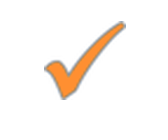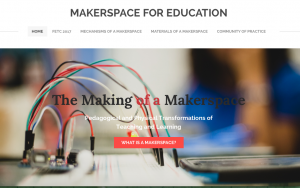
How to turn Roadblocks into Catalysts for Change?
In all of MET, one of the most important quotes I have learned is by Mishra and Koehler (2006) “merely knowing how to use technology is not the same as knowing how to teach with it” (p.1033). During the course of ETEC 533 I have been very focused on the following components: The importance of students constructing their own knowledge in the classroom and beyond through technology; Collaboration and improved assessment methods; The need for improved teacher professional development and release time to learn and implement technology in the classroom; and the need for easily accessible technological devices and sufficient bandwidth in schools.
When I embarked on my MET journey I had very little understanding of what technology was available for me to use in my classroom. I chose MET because I knew I needed to change what was happening with my students and my teaching. As a grade 5-8 educator for the past 26 years I felt like I was losing my students. Each day I entered my class with the plan to invigorate and “wow” my students, and each day I felt disappointed.
When I first began teaching I remember being proud of myself if my classroom was a silent hub, where students worked quietly on their own finishing the work I had assigned. Of course, this was after I had spent half the lesson nattering at them, dazzling them with my brilliance. Patting myself on the back for creating a room full of disengaged bored students is shameful in retrospect. At the time, I followed what I knew–good teachers had quiet students, good teachers’ students asked few questions because the lesson had been so amazing no questions were necessary, and good teachers did what has always been done.
As my career progressed I realized that silence meant nothing was happening: No noise, but no learning as well. My students had learned to play the game–stay quiet and no one knows that you have no idea what is happening in class. Change came about because my students were flunking test after test. Originally, I chalked that up to them not studying, not that I hadn’t really taught them anything. My students fell into three basic categories. Group 1 were the students who could regurgitate facts, group 2 were those who learned in spite of me, and group 3 were those who had learned nothing and were not motivated to study to do well on a rote paper and pencil test. While I had assumed the check marks and x’s on their assignments and tests were feedback, they were really nothing more than judgments on the student’s ability or willingness to play the assessment game.
It was at this point I really started talking to my students. I started speaking to them during lessons, during seatwork, during group work. I started assessing them during these conversations, really beginning to understand who knew what and how well. The more I spoke to my students the more engaged they became–maybe because I was actually paying attention to them, not trying to keep them quiet. Seatwork evolved into collaboration time. Students started talking more and more with each other. They began to see each other as sources of information and support. The more they relied on each other the more they brought out the best in each other. They wanted to succeed so they drew on each others’ strengths.
As stated by Kozma (2003), “Designers should provide students with environments that restructure the discourse of …classrooms around collaborative knowledge building and the social construction of meaning” (p.9). I was finally starting to design the classroom I had envisioned.
I won’t pretend it was all sunshine and roses, but things started improving. Now I knew when learning was occurring as partner and group talk got heated and excited as they discovered new facts or wanted to prove their theory. It was noisy and it was going well. I found that math and science became learning labs. Kids were not used to talking about math and science, they were just expected to do it.
During the readings, I found this quote by Hattie and Timperly (2007) especially enlightening and a good reminder of what feedback needs to be: “feedback needs to provide information specifically relating to the task or process of learning that fills a gap between what is understood and what is aimed to be understood” (p.82).
As for assessments, my students learned that hiding their struggles from me did no good. At random times, anyone could be expected to come sit with me and show me what they knew. The showing could be talking, drawing, explaining, using manipulatives or props. Students knew I was not there to judge them, rather I really wanted to help them learn. I evolved from a math and science teacher that said “today we will learn this…do it this way, because I said so”, to a teacher who said, “ok you don’t get this, let’s find another way, can anyone else think of a way we could do this?” It was actually really hard work to get my students to accept there is more than one way to solve a math or science problem. For some this is frustrating–they want the quick answer “show me how to do it so I can get it done”, while I want them to explore and understand.
I was happy that a change had occurred in my teaching and classroom but I still knew something was missing. My basic teaching strategy had not changed. I still chalked and talked a lot. I babbled incessantly about concepts and ideas. I had no idea how to change this. Thank goodness for MET courses like ETEC 533. Math and Science are perhaps the hardest subjects to change your teaching methods for. We are so used to following rules and formulas that we forget about understanding what is happening. I have been searching for ways to create a constructivist classroom. My initial steps included introducing a makerspace and allowing students to direct some of their own learning.
This worked well for some units but, in general, students and I as the teacher do not have enough experience to make self-directed learning successful as a full-time learning tool. What I learned was there is a difference between self-directed and constructivist learning. In constructivist learning all students explore the same math or science concept but construct their knowledge as they see fit. Module B was an excellent in-depth introduction for me regarding different constructivist techniques.
Anchored Instructions, SKI and Wise, Lfu and T-Gem all have appealing characteristics about them–whether it be the video modules of Jasper Woodley, the scaffolding used in the WISE module, the Global Information systems used to support Learning for Understanding or the T-GEM format using Chemland as an example. When I first started exploring these TELE’s I thought I would end up choosing one as my favourite and leaving the rest behind. What I learned was they all have valuable facets and they can all be used in different modules. I myself was stuck in the thinking of “What’s best? Let’s throw out the rest”. Perhaps it was just engrained in me that we cannot simultaneously use different constructivist teaching methods in the same year. I am used to the Board administration bringing in a new program and throwing out the rest. I was always frustrated by this approach but found myself doing the same thing. My thinking is changing over to “keep what is good, change what doesn’t work”.
Linn et al. (2003) hit the nail on the head for me in their article Wise design for knowledge integration stating, “we align professional development, knowledge integration, and flexibly adaptive curricula to build on the commitments and talents of teachers as well as the constraints and opportunities of their classroom contexts rather than imposing new practices without concern for past successes” (p. 518). I can see myself using each of these TELE’s in the coming years.
Moving beyond the methodology I was enlightened by the variety of simulations, software and interactive sites we investigated in ETEC 533. Finklestein et al (2005) reported that “results indicate that properly designed simulations used in the right contexts can be more effective educational tools than real laboratory equipment, both in developing student facility with real equipment and at fostering student conceptual understanding” (p. 2). They further state that “in an inquiry-based laboratory, students using the simulations learned more content than did students using real equipment” (p. 6).
As I teach elementary students, some of the information was too advanced for my students but many of the websites we looked at were perfect. I can easily see my students enjoying the scaffolded learning afforded by the WISE program. The simulations provided by the pHet site from the University of Colorado will become a staple in my classroom. I enjoyed looking at the examples provided in the course and wondering how I could expand on them with other technologies. The example of the pHet simulation on geometry and the use of the leap motion technology were the perfect combination of simulation and embodied learning.
As a kinesiologist, I have always known that learning with just our brains is not enough. We need to incorporate movement, rehearsal and building new kinesthetic and neural pathways. The more methods we can use to integrate learning the more easily our students will be able to recall and use the information they have learned in new situations. Rote memorization has a tremendous failure rate for recall, whereas embodied learning and simulations with gestures are much more effective. I noticed this in my classroom when students tried the leap motion app with 3D geometry. “When my students tried the leap motion 3-d geometry app in groups (taking turns to be the hands) I watched as almost all of them, even when observing and guiding others, used their hands or whole bodies (at times my class looked like an introduction to interpretive dance) to try and move in three-dimensional space to understand how to manipulate the blocks” (Sverko, 2017).

Retrieved from Livefromlockdown.com
After synthesizing all of the learning in this course and previous MET courses I feel I am ready to take the next step and begin constructivist lessons in my class using technology. Unfortunately, this is where I encounter the scourge of technology implementation in the classroom. I do not have devices in my classroom that I can use when they are most valuable, rather I must look ahead in my lessons and try to guess when they will be most helpful. When I have identified the time, I have to try and sign out devices to my classroom. Of course, there are never enough devices for each student, not to mention that often the previous class forgot to plug in the individual Chromebook or the entire cart and I have twenty dead batteries.
If I am lucky enough to sign out the Chromebook, at a time that is beneficial, I then must cross my fingers that I will be able to access the simulations I want to demonstrate. Often the bandwidth in our schools prevents us from using all Chromebooks at the same time. (Another frustration with devices in our school board is that we are not allowed to install apps without approval. Even more frustrating is that often our requests for specific apps are denied by the administration.)
Given all of the hurdles teachers must jump to use technology in their classes is it any wonder that the majority avoid using it? Avoidance of using what is provided further leads to an apathy at learning anything new. Most feel they do not want to waste time learning and implementing something that will flop during their lesson. Even if devices and broadband worked well we still would have the difficulty of teacher training on technology and the time to learn how to use the programs effectively. As highlighted in our interviews, many teachers see this as a barrier to proper implementation.

Retrieved from Pinterest.com
Teachers who do want to pilot technology in their classroom often become overwhelmed with the time, energy and money it takes to do a good job. Not to mention that many of these lead teachers quickly burn out because they are being asked to help more and more staff members. Although I recognize and have provided a case for how the barriers to the use of technology in the classroom seem to be insurmountable, I am still optimistic there is way to proceed. What is needed is a mandate in each province making technology and the implementation of the ISTE standards a priority in every classroom. We need to look to boards that are leading the way in technology. An example is the Edmonton Catholic District School Board. They have an emergent technology department that leads the way in showing teachers from K-12 how to implement technology successfully. Boards and administration need to be accountable for making the changes and bringing our schools into the 21st Century.
I look forward to being a catalyst for change in education, bringing technology to the forefront and leading by example. As colleagues see what can be done with constructivist techniques and simulations and software, hopefully they will become inspired to try at least one activity. I will continue to provide examples of Boards that are getting technology right to my administration in the hopes that they will move ahead in the right direction.
The Journey of a Thousand Miles Begins with a single step.

Retrieved from picturequotes.com
Upon reflection, I still feel my definition provided earlier in the course holds true:
The ideal pedagogical design of a technology-enhanced learning experience for math and science must first and foremost see students as constructors of their knowledge. Allowing students to use technology to effectively assist in the construction of their knowledge could include, but not be limited to: simulations (often with equipment unavailable in science and math classrooms), collaboration (with peers, mentors and outside experts), design (planning their learning and pathways), coding, exploration of various concepts (perhaps outside of the realm of the current curriculum mandate), testing hypotheses (trying their ideas; seeing what works and what doesn’t). Technology is a tool for students to use in the construction of their knowledge, aided by a supportive, knowledgeable teacher who can help push the boundaries of the students understanding. Students learn with, not are taught by technology (Sverko, 2017).
I now, thankfully, feel that I am better prepared to make this a reality in my classroom.

Retrieved from deidresanborn.com
References:
Finkelstein, N.D., Perkins, K.K., Adams, W., Kohl, P., & Podolefsky, N. (2005). When learning
about the real world is better done virtually: A study of substituting computer
simulations for laboratory equipment. Physics Education Research,1(1), 1-8.
Hattie, H. & Timperly, H. (2007). The power of feedback. Review of Educational Research, 77(1),
81-112
Kozma, R., & Robert B Kozma. (10/01/2003). Journal of research on technology in education:
Technology and classroom practices: An international study International Society forTechnology in Education.
Linn, M., Clark, D., & Slotta, J. (2003). Wise design for knowledge integration. Science Education,
87(4), 517-538.
Mishra, P., & Koehler, M. (2006). Technological pedagogical content knowledge: A framework
for teacher knowledge. The Teachers College Record, 108(6), 1017-1054
https://blogs.ubc.ca/stem2017/2017/03/15/3d-geometry-with-leap-motion-a-lesson-in-interpretive-dance/
https://blogs.ubc.ca/stem2017/2017/01/28/effective-design-of-teles/









